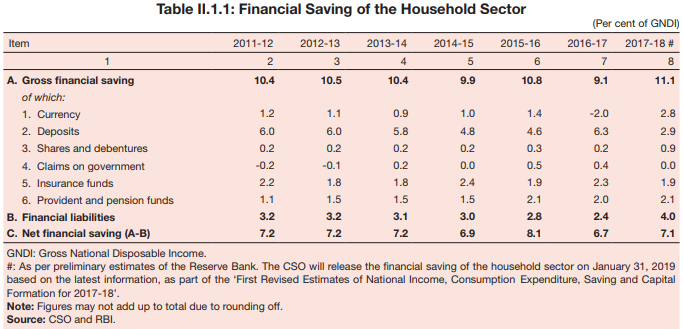In 2016-17, Prime Minister Narendra Modi announced demonetisation of high-value notes. In the following financial year, 2017-18, savings in currency by households spiked to at least six-year high, while deposits fell to at least six-year low, data available in RBI’s annual report showed.
The percentage of savings in currency in FY18 increased to 2.8% of the Gross National Disposable Income (GNDI) from 1.8% in FY16, before dipping to -2% in FY17, which was the demonetisation year. On the other hand, deposits, which was 4.6% of GNDI in FY16, spiked to 6.3% in FY17 but fell to 2.9% in FY18, RBI data showed.

Meanwhile, the data also showed that the share of savings through provident and pension funds did not change. Percentage of savings via provident and pension funds was 2.1% in FY16, which fell to 2% in FY17, and rose again to 2.1% in FY18.
“Household financial saving – the most important source of funds for investment in the economy declined to 6.7 per cent of GNDI in 2016-17, down from 8.1 per cent in 2015-16,” the RBI report noted.

The RBI report also showed that 99.3% of demonetised notes came back to system, leading to a political slugfest, in which questions are being if asked it was an ill-conceived move or a move that failed to deliver completely. Former finance minister P Chidamabaram even claimed that demonetisation led to a loss of Rs 2.25 lakh crore.

